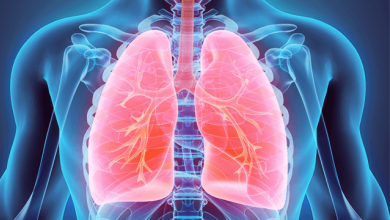Search results
Author(s):
Robert Voswinckel
,
Ralph T Schermuly
,
Norbert Weissmann
,
et al
Added:
3 years ago
Pulmonary arterial hypertension (PAH) is a chronic, progressive disease defined by increasing pulmonary vascular resistance and pulmonary arterial pressure, ultimately leading to right heart failure. The life expectancy of patients with PAH who do not receive appropriate treatment is dramatically reduced. Guidelines for the diagnosis and treatment of PAH have been established by the American…
View more
CMR and Myocarditis
Author(s):
Rocio Hinojar
,
Eike Nagel
,
Valentina O Puntmann
Added:
3 years ago
Article
Author(s):
Juan Carlos Kaski
,
Hiroaki Shimokawa
Added:
7 months ago
Author(s):
Athanasios Koutsoukis
,
Argyrios Ntalianis
,
Evangelos Repasos
,
et al
Added:
3 years ago
Cardio-oncology is an emerging field of cardiology that focuses on cardiovascular diseases in patients with cancer. The classic cardio-oncology paradigm is the prevention, diagnosis and treatment of cardiotoxicity resulting from chemotherapy and/or radiotherapy. Diagnosis and treatment of primary and metastatic cardiac tumours as well as cardiac amyloidosis can be considered ‘less classical’…
View more
Author(s):
Luis M Ruilope
Added:
3 years ago
Globally, an estimated 26.4% of the adult population suffers from hypertension, and this figure is set to rise by 3% by 2025.1 The condition is asymptomatic and is often dubbed the ‘silent killer’ because it frequently goes undetected. The clinical significance of hypertension stems from the increased risk of end organ damage due to elevated blood pressure (BP) (see Figure 1). Chronic high BP is…
View more
Author(s):
Michalis Kolentinis
,
Melanie Le
,
Eike Nagel
,
et al
Added:
3 years ago
Ischaemic heart disease (IHD) is the leading cause of morbidity and mortality worldwide. Two major pathways of disease development are acute coronary syndrome (ACS) and stable chronic angina.1,2 The success of prevention measures and early treatment pathways in ACS has helped to reduce the heart failure (HF) burden due to post-infarction remodelling and systolic dysfunction. However, accurately…
View more
Author(s):
Gianfranco Sinagra
,
Michele Moretti
,
Giancarlo Vitrella
,
et al
Added:
3 years ago
According to the latest position statement of the European Society of Cardiology (ESC), cardiomyopathies (CMP) are defined as “myocardial disorders in which the heart muscle is structurally and functionally abnormal, in the absence of coronary artery disease, hypertension, valvular disease and congenital heart disease sufficient to cause the observed myocardial abnormality”.1
CMP may be…
View more
Author(s):
George Thomas
,
Emmanuel L Bravo
Added:
3 years ago
Distinct hypertensive syndromes causing drug-resistant hypertension are increasingly being recognised. The ability to recognise these disorders has come as a result of a better understanding of their pathogenesis and the availability of sensitive and accurate diagnostic tools. The particular appeal of making the diagnosis centres around the potential curability of the hypertension, with…
View more
Author(s):
Alberico L Catapano
Added:
3 years ago
The strong positive correlation between plasma low-density lipoprotein cholesterol (LDL-C) levels and cardiovascular (CV) mortality has been documented beyond any doubt.1 A large body of trials aiming at reducing elevated LDL-C levels also shows that therapeutic intervention results in a proportional reduction of CV events independent of the type of intervention (i.e. diet versus drugs or…
View more
Remnant Lipoproteins and ASCVD
Author(s):
Mohanad Gabani
,
Michael D Shapiro
,
Peter P Toth
Added:
6 months ago
Article












 « First
« First